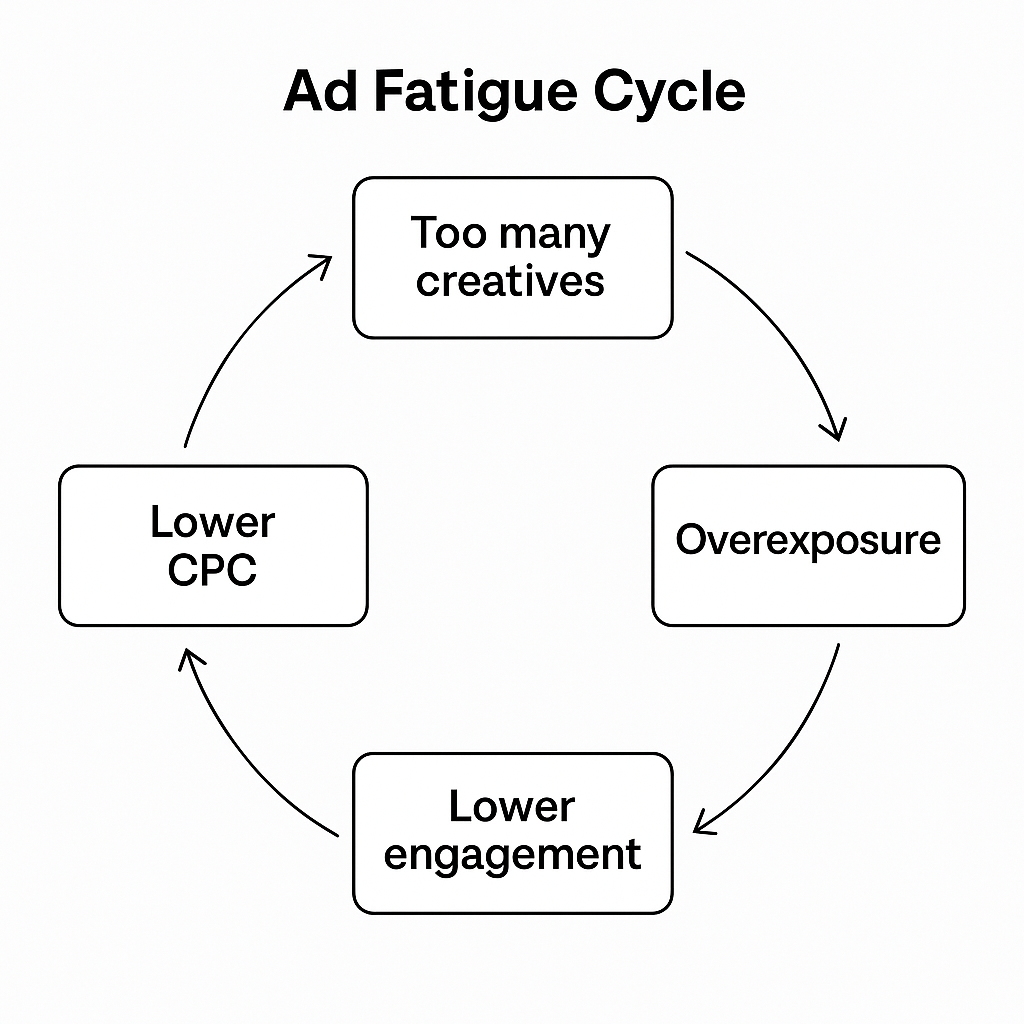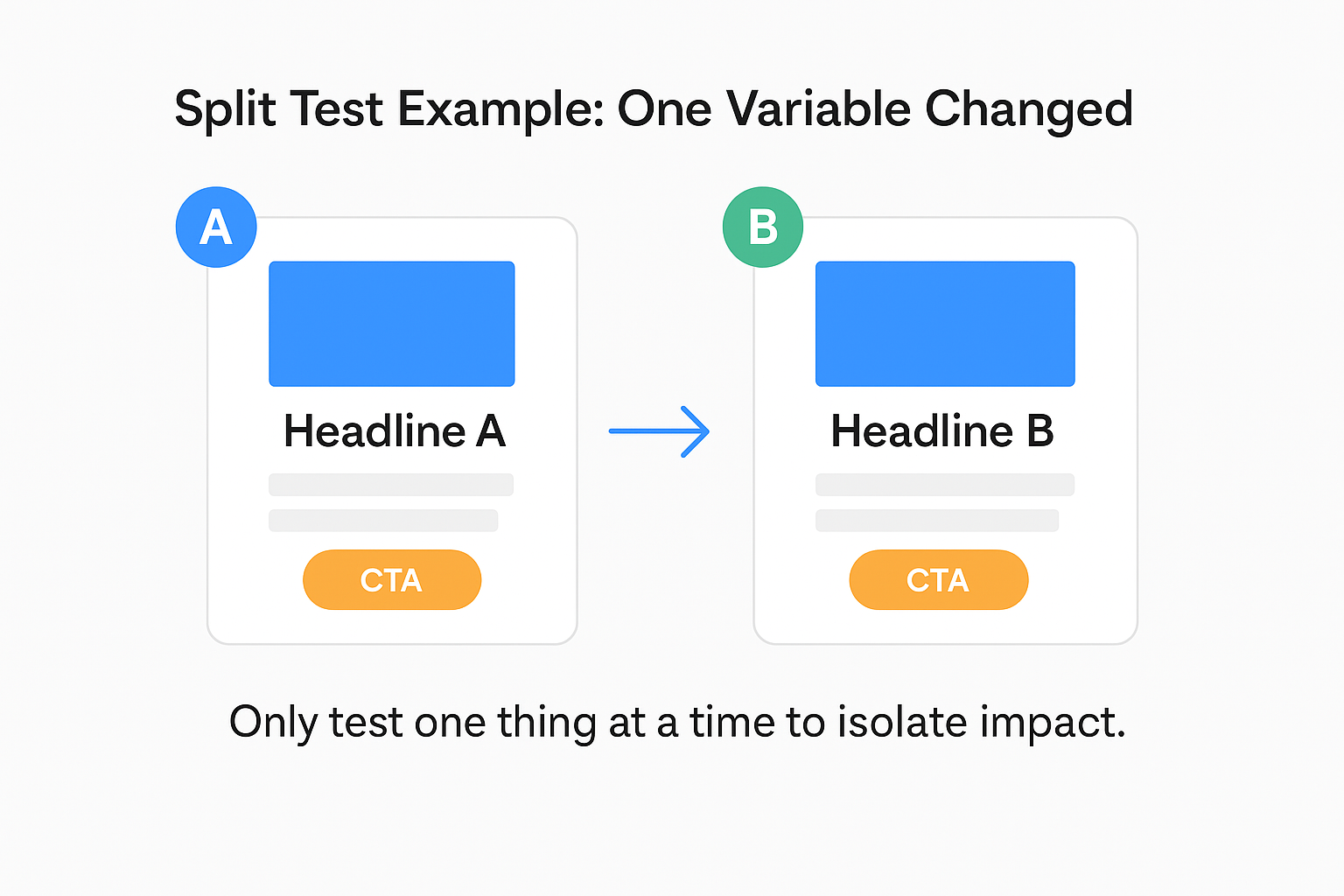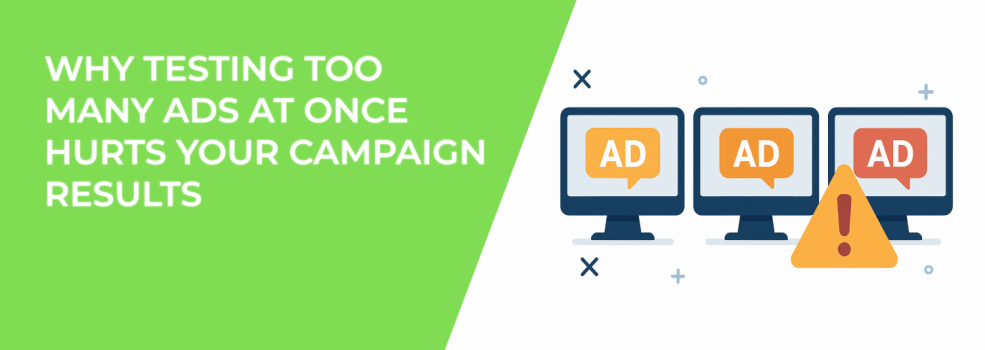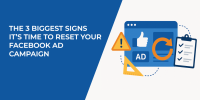At first glance, testing more ad creatives seems like a smart way to speed up your learning. The logic makes sense: launch more variations, get more data, and quickly identify the winner.
Many advertisers enter the testing phase with high hopes, expecting the following benefits:
-
More data. A larger volume of ad variations should, in theory, produce more insights across multiple metrics.
-
More insights. By testing different formats, messaging angles, and creative concepts, you hope to discover what resonates most.
-
Faster winners. With more ads in the mix, one is bound to outperform — right?
However, the reality often looks very different:
-
Confusing results. Too many variations make it hard to pinpoint what worked.
-
Overwhelmed dashboards. You end up drowning in metrics, struggling to make meaningful comparisons.
-
Budgets drained too early. Your spend gets spread too thin, so no creative gets the volume it needs to prove its worth.
If your campaign feels cluttered or your test results are inconclusive, it’s likely because you’re testing too much at once.
1. Your Budget Gets Spread Too Thin
Every ad you test needs enough budget to deliver impressions and generate insights. When you test too many ads at once, you dilute your spend.
Here’s what a healthy testing setup requires:
-
Enough spend to collect data. Each creative needs enough impressions and interactions to produce statistically reliable performance metrics.
-
Sufficient impressions to exit the learning phase. Facebook’s algorithm needs about 50 conversion events per week per ad set to fully optimize delivery.
-
Consistent delivery to evaluate performance. If some ads get fewer impressions than others, you’ll be comparing results that aren’t even on the same scale.
Let’s say you have a $1,000 budget. If you test 10 creatives, each gets $100. That’s rarely enough to reach confidence, especially in competitive industries. But if you test just 3 creatives, each gets over $300 — leading to:
-
More impressions per ad. Your ads will exit learning sooner and provide clearer insights.
-
Faster optimization cycles. You’ll get better performance data in a shorter amount of time.
-
Smarter decisions. With cleaner data, you can cut losers early and scale winners confidently.
If you’re working with limited budgets, we recommend this guide on how to run lean but effective campaigns.
2. Ad Fatigue Comes Quicker Than You Think
Rotating fresh creatives frequently can be a good thing — but not when you overload your audience too quickly. When users are hit with too many versions of your ad in a short time span, fatigue sets in fast.

Here’s what typically happens:
-
You launch too many creatives. The audience sees a mix of similar messages with no time to engage with any single one.
-
No single ad gets enough traction. Without sufficient delivery, none of the ads stand out — and none have time to gain momentum.
-
Your audience gets overexposed. Seeing multiple creatives too often can make your brand feel spammy and uncoordinated.
This results in a negative chain reaction:
-
Lower engagement. Users scroll past without clicking or interacting.
-
Higher CPCs. Poor engagement leads to lower quality scores, making ads more expensive.
-
Weaker conversions. If your ads don’t connect, they don’t convert — and your ROI drops.
To prevent this, test fewer creatives and let them run longer. Give your best ideas a chance to breathe. You can also use frequency capping to avoid overexposure.
3. The Algorithm Gets Confused
Facebook’s algorithm works best when it can collect clean, consistent signals. When your ad set includes too many creatives, the algorithm gets overwhelmed.
Here’s what can go wrong:
-
Fewer impressions per ad. Every new creative slices the pie thinner, making it harder for any one ad to gather enough data.
-
No clear top performer. When results are spread across many ads, there’s no standout — and no insight.
-
Learning phase takes longer. Without enough data, ads stay stuck in “learning limited,” hurting performance.
The outcome? Facebook can’t confidently optimize your delivery, so it distributes impressions inconsistently — sometimes favoring an ad before enough data proves it’s best.
To help the algorithm do its job:
-
Keep the number of creatives low.
-
Monitor learning phase status.
-
Let ads stabilize before making edits.
For more on exiting the learning phase faster, explore this optimization strategy.
4. You Miss the "Why"
Sometimes, one ad clearly outperforms the rest. But when you’ve changed several elements across your creatives, you can’t tell what made the difference.

To gain real insights from testing, you need to isolate variables. Here’s how:
-
Start with a base ad. Use a consistent version of your best-performing creative as the control.
-
Test one variable at a time. For example, compare a benefit headline to a question headline — but keep the image and CTA the same.
-
Keep everything else consistent. When every ad in a test has multiple changes, your test doesn’t measure effectiveness — it measures chaos.
A structured testing process ensures you can attribute performance differences to specific elements. That’s how you scale success.
Not sure how to prioritize tests? This guide helps you decide where to focus.
Smarter Testing Strategies
If you want stronger performance and clearer takeaways, you need a smarter approach to creative testing. Here’s how to run better, leaner tests:
Before you test:
-
Define a clear hypothesis. For example, “Ads with a testimonial headline will get a higher CTR than ads with a feature headline.”
-
Choose one success metric. Focus on the KPI that matters most: CTR for engagement, conversion rate for sales, or cost-per-lead for demand gen.
During the test:
-
Limit the number of creatives. Stick to 2–4 ads per ad set. This gives each ad enough budget and delivery volume.
-
Control the variables. Only change one thing — image, headline, CTA, etc. — to isolate impact.
-
Avoid mid-test edits. Editing budgets or creatives during testing resets the learning phase and muddies your data.
After the test:
-
Evaluate all relevant data. Look at your main metric, but also review supporting stats like CPC, CPM, and engagement breakdown.
-
Scale winning creatives. Increase budget gradually, or move your winner into new ad sets for further testing.
-
Document your findings. Save your winning copy, visuals, and learnings so you can build on success.
You can find a complete walkthrough in our full testing strategy guide.
Recap: Focus Over Flood
Testing is essential, but more is not always better. Too many creatives create confusion, not clarity.
Common problems with over-testing:
-
Diluted budget. No ad gets enough spend to generate solid results.
-
Audience burnout. Too many variations make your brand feel scattered.
-
Algorithm overload. Meta can’t optimize effectively when signal quality is weak.
-
Insight loss. Without structure, you won’t learn what actually worked.
What to do instead:
-
Test 2–4 creatives per ad set. It’s enough to compare options, but not so many that you confuse the system.
-
Change one thing at a time. Keep your testing structured and clean.
-
Be patient. Let ads run for several days and gather data before making decisions.
-
Build on winners. Use strong performers as your new control for future rounds.
Fewer, better ads — that’s the real shortcut to scalable performance.

